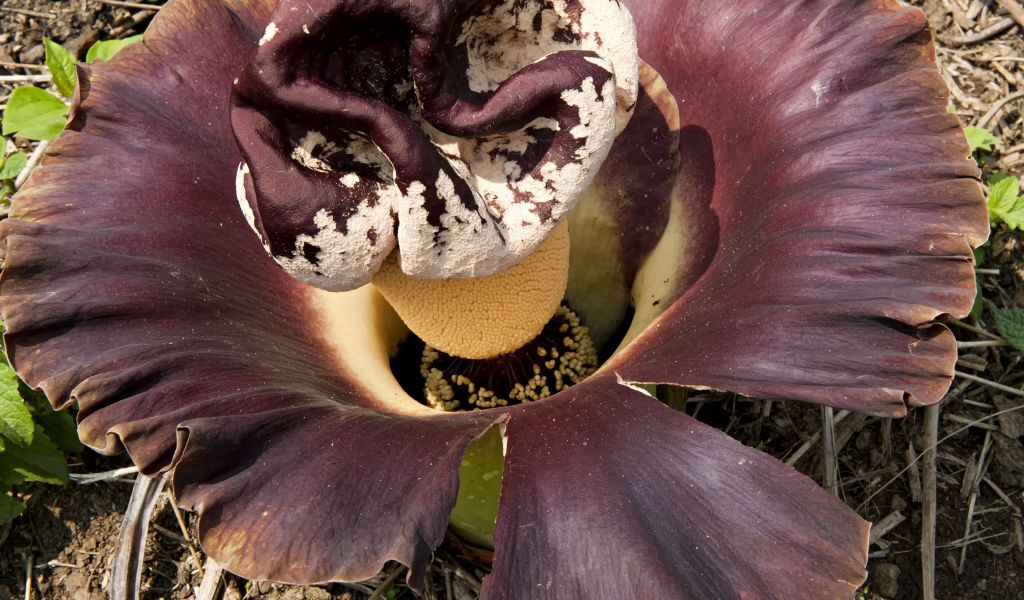ຫົວກະບຸກ / Elephant Foot Yam
APA 6th ed. ຫົວກະບຸກ / Elephant Foot Yam. (2021, August 25). Retrieved from https://www.phakhaolao.la/kb/0000020
MLA 8th ed. ຫົວກະບຸກ / Elephant Foot Yam. Pha Khao Lao, 25 August 2021, https://www.phakhaolao.la/kb/0000020.
Chicago 17th ed. Pha Khao Lao. 2021. "ຫົວກະບຸກ / Elephant Foot Yam." Published August 25, 2021. https://www.phakhaolao.la/kb/0000020.

Amorphophallus campanulatus var. blumei Prain
Amorphophallus campanulatus f. darnleyensis F.M.Bailey
Thai: buk, buk khangkhok, man suran, bia, beau, hua buk, buk khung
khok, buk nam, buk luang, krabuk, bakkadeu
Cambodian: toal
Vietnamese: khoai nuea, neua chu-oong
English: elephant foot yam, telinga potato, whitespot giant arum,
stink lily, Stanley’s water-tub, konyaki tuber
This perennial herb dies back from January-May, afterwards producing a new plant from the tuber. Tubers are often indented on top and ball-shaped with outgrowths at the side, which are potential new plants. Mature tubers measure up to 30 x 20 cm, are brown in colour but whitish inside. Outgrowth tubers are sized about 10 x 4 cm. The leaf stalk (not stem) can be about 1.5 m-2 m long and up to 10 cm thick. This is pale to dark or blackish green, usually with large pale spots and many tiny dark dots, and has a surface of shallow ridges. Each plant has one leaf, 3-35 x 2-12 cm. The inflorescence is single-stemmed, 3-20 x 1-8 cm, partly surrounded by a funnel-shaped modified leaf or leaf like part of 10-40 cm x 15-60 cm, pale green to dark brown, with circular paler spots. At the base it is maroon and fleshy. Flowering and fruiting occurs before the plant has a leaf. The fruit is juicy, yellow to red when ripening, with one to three seeds.
Edible starch is obtained from the large tubers (houa), which look like an elephant’s foot. In Japan this is used as a diet food. The large round bulb-like stem base of ka buk is boiled and fed to pigs, but people can also eat it. An edible species of dung beetle often lives in the large flowers. Seeds and tubers are used as a medicine to lower cholesterol, treat coughs, malaria and liver diseases, and to extract poisons from the body. The ripe fruit is eaten by birds. Many varieties of houa ka buk are known and used in Asia. Houa phouk, another Amorphophallus, is used for treating malaria.
